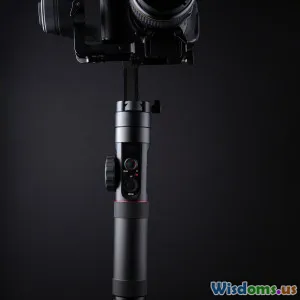
Creating Impactful Social Issue Documentaries
7 min read Explore how to craft powerful social issue documentaries that inspire change and engage audiences effectively. (0 Reviews)
Creating Impactful Social Issue Documentaries
Documentaries have the power to illuminate pressing social issues and inspire change. They can educate audiences, provoke thought, and encourage action. This article explores the essential elements and techniques for creating impactful social issue documentaries that resonate with viewers and promote awareness.
Understanding Your Subject Matter
1. Research Thoroughly
Before you pick up your camera, it's crucial to understand the social issue you want to address. Conduct in-depth research to gather facts, statistics, and anecdotes related to your topic. This not only informs your narrative but also lends credibility to your documentary.
For example, if you’re focusing on climate change, familiarize yourself with the latest scientific findings, personal stories from affected communities, and existing documentaries on the subject.
2. Identify Your Angle
With an abundance of social issues to cover, it’s essential to carve out a unique angle. What specific aspect of the issue resonates with you? What stories are underrepresented?
Consider the documentary 13th by Ava DuVernay, which tackles systemic racism in the U.S. criminal justice system by focusing on the historical context of the 13th Amendment. This specific angle allows the film to present a fresh perspective on a well-known issue.
Crafting Your Narrative
3. Develop a Compelling Story Arc
A strong narrative structure is crucial for keeping viewers engaged. Your documentary should have a clear beginning, middle, and end. Introduce the problem, present real-world examples, and offer a resolution or call to action.
For instance, in The Social Dilemma, the story unfolds by showcasing personal accounts from technology experts, highlighting the dangers of social media while also providing solutions to the problems presented.
4. Incorporate Personal Stories
Personal anecdotes can create an emotional connection with your audience and make the issue more relatable. Seek out individuals whose lives have been impacted by the social issue, and allow them to share their stories in their own words.
The documentary Won’t You Be My Neighbor? explores the life of Fred Rogers through interviews and personal stories, making the film resonate deeply with viewers.
Technical Considerations
5. Use Visual Storytelling Techniques
Visuals are the beating heart of any documentary. Utilize various filmmaking techniques—such as interviews, b-roll footage, and animation—to enhance your storytelling.
Incorporating powerful visuals that illustrate the issue at hand can evoke emotions and drive your message home. For example, Chasing Ice uses stunning time-lapse footage to depict the effects of climate change on glaciers, making the science accessible and impactful.
6. Sound and Music
Sound design plays a critical role in setting the tone of your documentary. Use soundscapes and music that complement the emotional weight of your narrative. A well-placed score can elicit feelings of hope, sadness, or urgency, enhancing the viewer's experience.
Consider how The Act of Killing utilizes music to juxtapose the horrors of genocide with the absurdity of the killers' reenactments, creating a haunting and thought-provoking contrast.
Engaging Your Audience
7. Promote Discussion
Once your documentary is complete, finding ways to engage your audience is key. Host screenings followed by discussions, create social media campaigns, or partner with organizations that focus on your issue.
For example, after the release of The Hunting Ground, which addresses campus sexual assault, the filmmakers organized events to raise awareness and promote dialogue around the topic.
8. Encourage Action
A successful social issue documentary not only informs but also empowers viewers to take action. Include resources for viewers to learn more or get involved—whether it’s donating to a relevant charity, volunteering, or advocating for policy changes.
Before the Flood, featuring Leonardo DiCaprio, emphasizes individual and collective action to combat climate change, leaving viewers feeling motivated to make a difference.
Conclusion
Creating impactful social issue documentaries requires a thoughtful approach, from researching your subject matter to crafting a compelling narrative and engaging your audience. By using personal stories, strong visuals, and a clear call to action, you can create a documentary that not only informs but inspires change. Remember, the ultimate goal is to give a voice to those who may not have one and to shine a light on issues that matter.
Documentaries can be a catalyst for change, and with the right techniques and dedication, you can create a powerful piece that resonates with audiences and sparks important conversations.
Rate the Post
User Reviews
Popular Posts





















